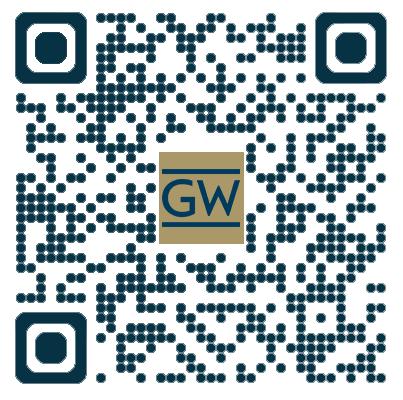

Annual Report
FY 2025


Year in Review
As we reflect on the past year, GW InformationTechnology (GW IT) is proud of the progress we’ve made in advancing the university’s digital capabilities to better support our community in achieving excellence in fulfilling the university’s mission. We’ve enhanced foundational systems by migrating key services to the cloud and working with stakeholders to modernize the Banner system, improving usability and operational efficiency. To better support the university’s growing research needs, we expanded our High-Performance Computing (HPC) resources, enabling faculty and scholars to tackle complex challenges with greater speed and scale. Additionally, we have populated the GW Data Lake with data from many of our core systems, enabling decision makers to leverage more integrated and comprehensive data to support their decisions. Working with campus and industry partners, we have enabled more use of AI tools that meet the security and privacy standards we require to keep GW’s information safe while taking advantage of the advancements that AI brings. To create a more streamlined and efficient communications environment, we launched the Zoom initiative to bring the campus community together in an environment of common technologies supporting web conferencing, classrooms, conference rooms, and phone services.
In collaboration with campus partners we launched the Slate system for better enrollment management, CourseDog for enhanced registrar support, and a new faculty information system, Elements, to improve faculty annual reporting. With many of these larger initiatives, we have led with change management to engage our community in transitions that leverage new technologies to improve their work and enable them to focus on more strategic work.
We are excited to continue building on this momentum by delivering more personalized, intelligent, and adaptive digital experiences. Our priorities include expanding support for student success, empowering faculty with tools that enhance teaching and research, enabling researchers with advanced infrastructure, and equipping university leadership with valuable insights to guide strategic planning. Through collaboration and innovation, we’re committed to delivering a seamless technology environment that empowers the GW community and drives excellence in learning, research, and innovation.

Geneva Henry
Dean of Libraries & Academic Innovation, Vice Provost for Libraries & Information Technology

Our Mission
GW IT is a trusted partner, enabling the delivery of world-class education, research, and clinical care by providing an efficient, scalable, and secure digital experience to GW faculty, students, and staff.

Roadmap
GW Strategic Priorities
Building on the university’s strategic priorities, our initiatives are aligned to support and advance these goals through innovative solutions.

Generate Scholarship with Impact
Establishing a strong foundation for research cyberinfrastructure will accelerate discovery and innovation and create opportunity to amplify research impact.

Prepare Strong & Resilient Leaders
Designing a robust and integrated technology experience will empower students to live and learn without distraction and unlock opportunities for personalized learning and powerful connections.

Strengthen Foundation for Excellence
The university’s aspirations require coordinated shifts in culture and workforce as well as technology to amplify the impact of any digital transformation initiative.
FY 25
Collaboration,Insights, Experience
Enterprise Applications & Data
Enabling the Power of Brilliant Minds
Faculty GW Students


Researchers GW Staff

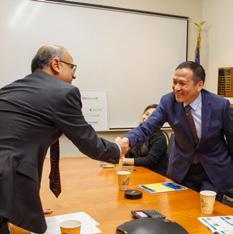
the ‘One

The Journey

Accelerating to the Cloud
Our journey to the cloud is a strategic initiative to modernize GW’s IT infrastructure, enhance security, and deliver more flexible and scalable services to the entire university community. Migrations are happening in phases to ensure a smooth transition of services and applications.
• Phase 1 - Wave Migration: In this phase, applications and data are moved from campus servers. This transition improves system stability and scalability, and prepares the environment for optimization.
• We successfully completed Round One of Wave Migrations in FY25, marking a major milestone in our cloud transformation journey.
• Phase 2 - Optimization: Following migrations, we focus on optimizing performance, reducing costs, improving reliability and aligning cloud resources with workload demands.
Empowering Through Change: Service Delivery & Support
Over the past year, we’ve strengthened change management by extending communication timelines, involving partners in the planning of projects, and ensuring timely, targeted information reaches the right audiences. Through close collaboration among IT service delivery teams, and our campus partners, we’ve increased transparency and helped the GW community better anticipate and navigate change.
Change Management Driving Transparency in IT Initiatives:
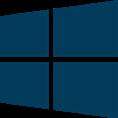
Windows 11 Upgrades
Enabled self-service upgrades via Software Center, allowing users to choose convenient installation times before automatic deployment.

Adobe License Management
Launched a self-service software portal for Adobe Creative Cloud and Acrobat license access.
Network Enhancements
• Wi-Fi Improvements: Wi-Fi Improvements: Promoted eduroam as the primary network aligned with global standards that support roaming access and participating institutions and introduced GWdevice for gaming and smart devices, offering a home-like Wi-Fi experience.
• Distribution Node Upgrades: Continued modernization of core infrastructure to boost network reliability and enable enhanced features.


GW Data Lake: A Foundation for Data-Driven Innovation
As part of our ongoing efforts to enhance data capabilities across GW, we’ve made key progress in laying the foundation for more efficient and secure data use by centralizing access, streamlining pipelines, and strengthening governance.

• Centralization of Data Access: Successfully consolidated access to a wide range of institutional data sources (Banner, EAS, GWorld, BMC Helix and others) into a single secure environment, reducing reliance on direct system connections.
• Automated Data Pipelines: Implemented automated, secure data pipelines from AWS S3 into Snowflake, improving timeliness and consistency of data availability.
• Improved Data Governance: Integrated metadata from the Data Lake with Collibra, enhancing data discoverability, lineage tracking, and stewardship oversight.
• Inaugural Data Summit: Launched a new annual event to foster collaboration, raise data literacy, and engage the GW community in shaping the future of data use across the university.
Banner Modernization: Progress & Transformation
GW IT collaborated closely with campus partners throughout the past year to advance the Banner Modernization Project. Our primary goal is to modernize our HR and Student System (Banner) with streamlined workflows, integrated dashboards, improved experience, and increased resiliency.
With a transformation this large, we must reframe the challenges of today into opportunities for tomorrow. This means we are tackling the complex processes that have fortified how we work. Collectively, we can design our future state. A key milestone this year was delivering functionality for faculty to push grades from Blackboard to Banner in May 2025. We continue to explore additional functionalities to implement before the full transition, including:
• Proxy Management: This feature will allow students to grant secure, view-only access to specific academic or financial information to authorized individuals (proxies).
• Anonymous Grading: To support fairness and eliminate bias in the grading process, we’re looking to implement anonymous grading for courses that require it.
Beyond these specific features, we have made substantial development progress in critical areas such as integrations, reporting, processes, and workflows.
We deeply appreciate the engagement and participation from our campus partners in this transformation project. For more details on this ongoing transition or to share feedback, please visit it.gwu.edu/banner-modernization.
The Journey
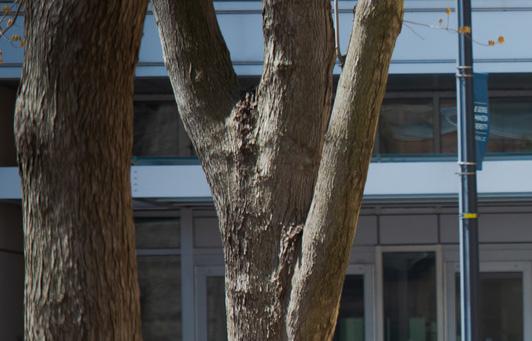
Enabling Secure, Strategic Use of Generative AI Across Campus
Over the past year, GW IT has worked closely with campus partners to evaluate, roll out, and support the responsible use of generative AI tools. These efforts ensure the university has the infrastructure and guidance needed to explore emerging technologies and enable innovation in research, teaching, and operations.

GW Chat (AI-Powered Web Support Pilot)
A customizable, private generative AI platform currently piloted on the GW Procurement and iBuy sites. GW Chat helps users find relevant content across GW websites and can be tailored to departmental needs. It supports secure, responsible AI use aligned with university policies.

AI-Powered Ticket Triage
A new internal tool that enhances IT support by generating AIinformed responses to incoming help desk emails. Drawing from internal knowledge bases and past tickets, this tool helps IT staff respond faster and more accurately, improving service quality and efficiency.

AI Tools & Integration Support
GW IT provides access to a growing suite of generative AI tools— including Google Gemini, NotebookLM, and Box AI—and supports departments in evaluating, acquiring, and customizing solutions to meet their specific needs. We help ensure these tools are used securely, responsibly, and effectively across the university.
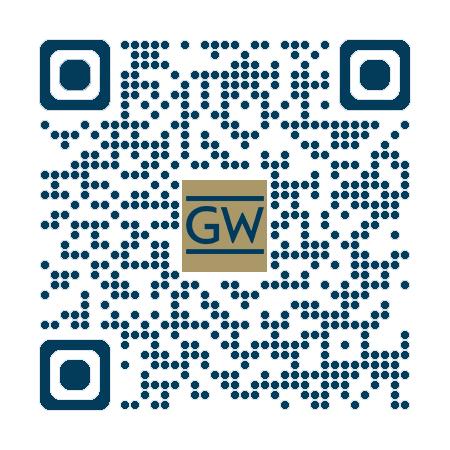
Learn more about our Gen AI Initiatives it.gwu.edu/gen-ai

Role Based Access Control (RBAC)
GW IT is implementing Role Based Access Control (RBAC) to improve security and compliance as well as streamlining account management by assigning system access based on job roles rather than individuals. This ensures users receive access in a timely manner and only have access to what they need to do their jobs.
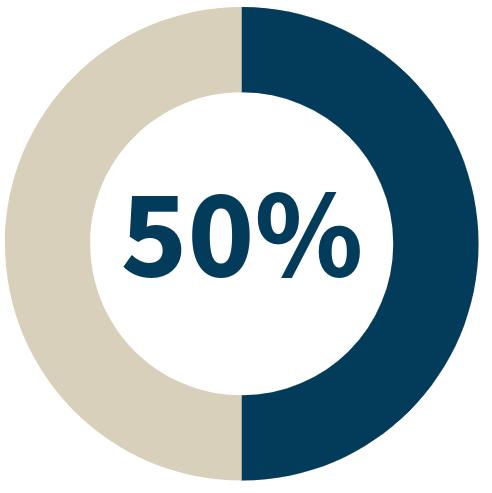
In FY25, we completed 50% of Phase 1 - RBAC for Banner, following a successful pilot with Human Resource Management and Development in Spring 2024. The phased expansion continues, with GW IT working to define roles, support adoption, and ensure a secure, efficient transition.
RBAC implementation involves auditing current user access and analyzing permission patterns to define roles, a process we’re conducting in close collaboration with departments. These roles are then configured, tested through simulation, and refined before going live to ensure secure and efficient access management.
How it Works
Define Roles
Determine the different roles needed in the organization and what permissions each role should have.
Assign Permissions to Roles
Assign the necessary permissions to each role.
Assign Roles to Users
Assign users to the appropriate roles based on the level of data access required.

On the Horizon

Looking ahead, our priorities are firmly aligned with delivering solutions that directly support the vibrant use cases across our university.
Transforming the Shared Digital Experience
University-wide initiatives—both underway and on the horizon—aim to enhance the shared digital environment by improving connectivity, strengthening security, and expanding access to modern, integrated technologies.

Google Domain Consolidation
We’re working to bring all GW users—students, faculty, and staff—under a single Google Workspace domain. This change will simplify account management, improve collaboration, and eliminate the need for multiple accounts for users with dual roles. The project is currently in the discovery phase, with a task force of students, faculty, and staff helping define requirements. We’re also working closely with Google to ensure a smooth and efficient transition, with design work expected to begin in Fall 2025.

Getting More with Zoom Workplace
GW is transitioning to Zoom Workplace as our primary platform for communication and collaboration. This multi-year effort includes migrating phone services from Cisco to Zoom Phone, retiring Webex, and adopting Zoom Rooms as the new standard for classrooms, conference rooms, and event spaces.
Enhancing the Student Digital Experience
Current and upcoming initiatives are focused on simplifying, personalizing, and improving how students engage with GW’s digital tools and services—making it easier to navigate everything from registration to academic support.
Simpler Course Planning
With Coursedog, we’re improving how classes are scheduled and managed, so students can register with fewer conflicts and more accurate course information.
Better Admissions Experience
Through Slate, we’re streamlining the admissions process— making it easier to apply, track applications, and access financial aid information in one place.
Smarter Student Systems
As part of the Banner Modernization project, we’re upgrading core systems to provide faster, more reliable access to student services and realtime academic information.

We’re launching and planning efforts to streamline administrative tasks, support teaching and research, and improve access to essential systems and data for faculty and staff across the university. Transforming the Shared Digital Experience
HR and Student Information System (SIS) Modernization
We’re preparing for a major upgrade to our HR and student systems to improve how faculty and staff manage hiring, payroll, course schedules, and student records. These changes will reduce manual work and make it easier to access the information you need.
Budget Planning Tools
A new budgeting platform is being evaluated to streamline financial planning and reporting. This will give departments better visibility into their budgets and reduce the need for manual spreadsheets.
CRM Advance
In partnership with University Advancement, GW IT is implementing CRM Advance to modernize how the university manages alumni and donor engagement. Phase 1 of the project is in progress, with ongoing work focused on data cleanup, user stories, stakeholder engagement, and exploring system capabilities to support future advancement needs.


74,731 9.15
Total Annual Support Requests
73,111 1,620 General Support Requests Requests related to Special Projects*
*Includes: Google Alumni Storage Changes, Zoom Migration & Windows 11 Upgrade
FY 24 vs FY 25 IT Support Requests Satisfaction Survey n=1,896 responses
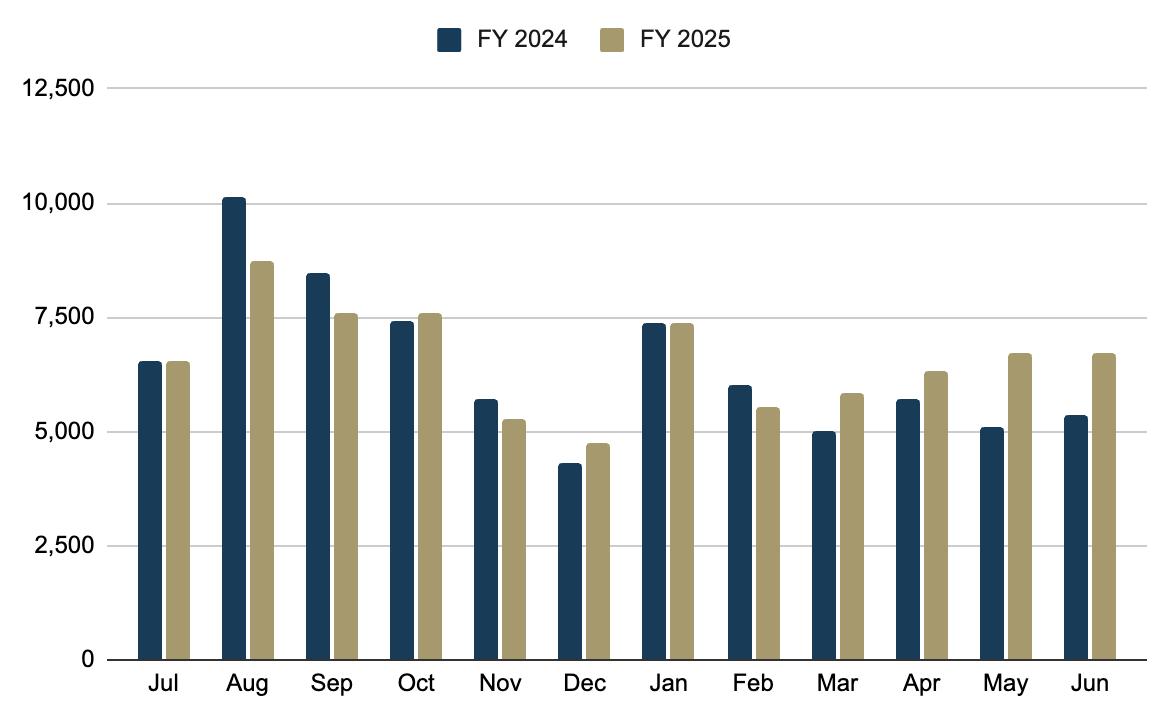
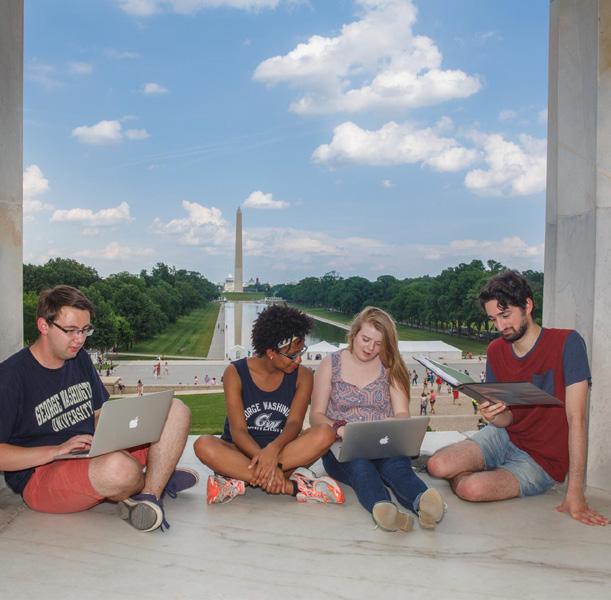


Contact Method for Support Requests


Support Requests Resolved in Initial Contact
Total Calls in FY 25

*excludes calls that were dropped under 15 seconds
Support Requests by Role
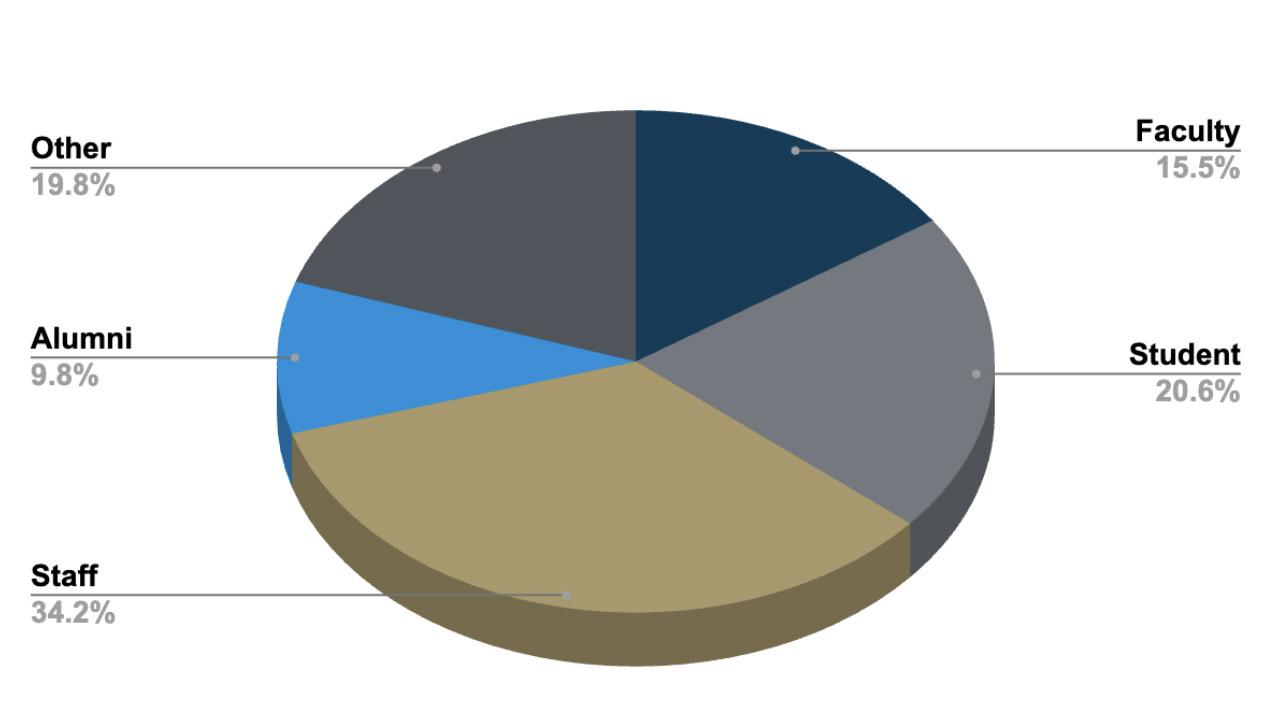
Academic Tech in Action
GW IT continues to modernize technology across classrooms and conference rooms, creating seamless, flexible, and reliable learning environments. As part of modernization, we launched the Zoom Migration initiative last year, transitioning managed spaces to Zoom Rooms to ensure a unified experience across classrooms and conference rooms.
By standardizing technology, we are making spaces easier to use, more reliable, and better supported. These efforts aim to provide seamless, intuitive technology that supports teaching, research, collaboration, and innovation across the university.
Supporting Classroom Technology


Classroom & Lab Technology Services
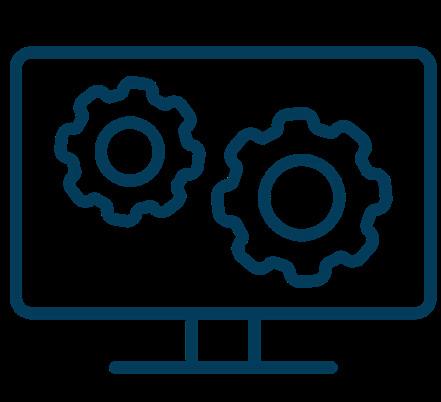

451
Computer upgrades across campus labs & learning spaces
693 1,472
3D Printing Requests
Parts Printed

Modernizing GW Networks
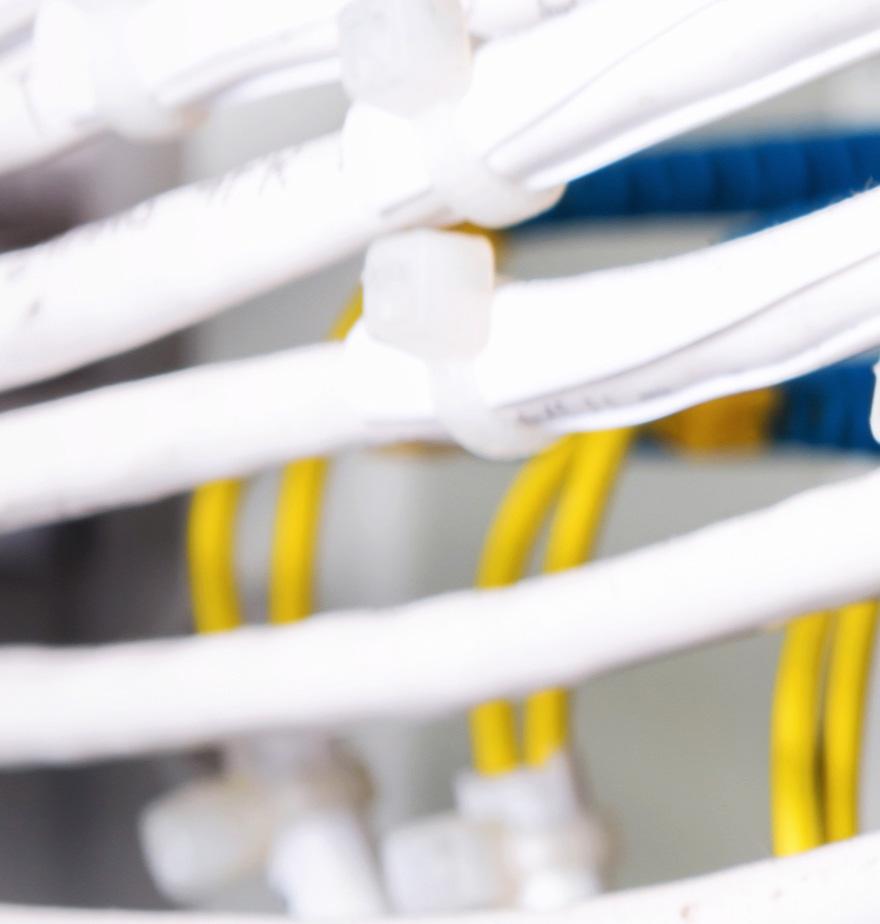
A reliable and secure network is vital and empowers research, learning, and innovation across the university. This past year, we continued to upgrade our network infrastructure. These projects enhance performance and expand capabilities, ensuring a seamless digital experience:
Distribution Network Replacement
We replaced all 16 distribution nodes—large network devices that serve multiple buildings and connect wired and wireless devices within them.
These upgrades now support up to 50Gbps access switch connectivity and 200Gbps distribution node capacity.
Access Switch Upgrades
Beginning in FY 2024, we launched a campus-wide access switch upgrade as part of our annual lifecycle replacement program. As of FY 25, 43% of wired access switches have been upgraded, improving network speed, stability, and reliability. These upgrades replace aging hardware with modern equipment that supports advanced monitoring and proactive issue resolution.
Streamlined GW WiFi Networks
In August 2024, we retired GWconnect and transitioned visitors to GWguest. We introduced GWdevice, designed to provide a home-like experience for streaming and gaming devices, while also expanding support for Internet of Things (IoT) devices in residential, academic, and research environments. In January 2025, GWireless was retired, and eduroam became the university’s primary WiFi network.
50 Gbps can stream 2,000 4K videos at once. 200 Gbps transfers 90 TB—millions of photos or thousands of hours of video—in just one hour.
Buildings with Upgraded Access Switches
Thurston Hall
1959 E Street
1957 E Street
1922 F Street
Year One with GWdevice
23,000+ 3,000
unique devices connected TB of data passed through (that’s enough data to stream HD video continuously for over 85 years without running out of space.)

Network Services by the Numbers
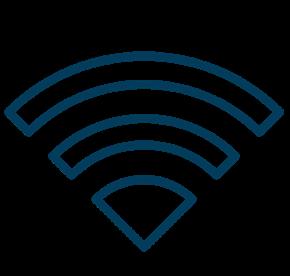

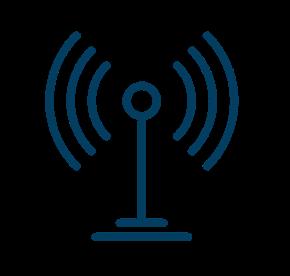
343,000+
unique devices connected to wireless networks
TB of data passed through GW networks in FY 25, which is over 2 million hours of 4K video
17,000+ 6,800+
Wireless access points upgraded

Most Connected Locations
District House
Thurston Hall
Shenkman Hall
South Hall
Amsterdam
Research Technology Services
Research Technology Services (RTS) provides high-performance computing, advanced storage solutions, and specialized software to support intensive, data-driven research. RTS provides researchers with the advanced technology needed for large-scale computation, high-bandwidth performance, and sophisticated visualization—supporting innovation and discovery.
Key Investments in Research Technology
BaseStar Expansion
Each GH200 delivers massive parallel processing power—together, they can handle complex simulations, large-scale data analysis, and AI model training at speeds previously unattainable.
PB Hammerspace
storage
This ultra-fast, software-defined storage layer provides 1PB (petabyte) of scratch space. It supports high-speed data access for research workflows, simulations, and temporary data processing.
Future Intiatives & Investments
• Expanding HPC Burst/augment with AWS Cloud
• Enhanced support for research with compliance requirements: NIST 800-171/CMMC
• Effort to join Open Science Data Federation
• Upgrade Cerberus to 100G Ethernet network fabric
Each node is equipped with dual NVIDIA L40s GPUs and 1.5TB of memory, enabling real-time rendering, immersive data visualization, and support for memoryintensive research applications.
Node Deployment
Designed for highly parallel workloads such as large-scale simulations, data modeling, and advanced research computing.
384 CPU cores 2.5TB of memory
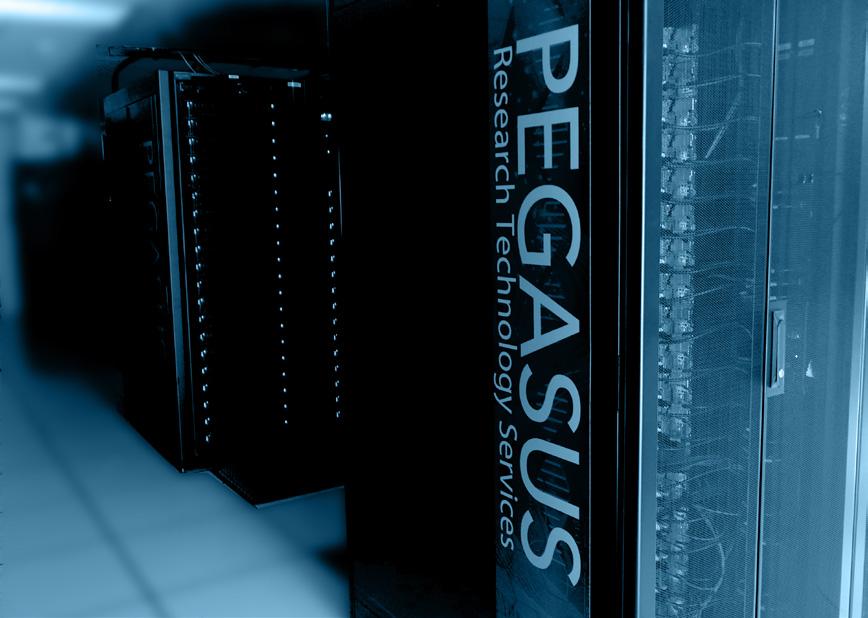
8 GH200 NVIDIA SuperChips GPUs
2 Visualization nodes
High Performance Computing
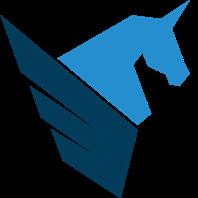

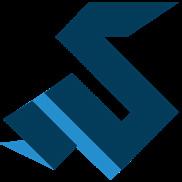



Cybersecurity & Safe Computing

We’ve enhanced security across the university by strengthening protections, countering emerging threats, and expanding cybersecurity awareness. These efforts reflect a continued commitment to maintaining a resilient and secure digital environment for research, learning, and administration.
Cybersecurity Awareness & Community Engagement
We have expanded resources and channels for raising awareness.
13 Webinars with 128 Participants
These sessions accounted for 46 delivery hours, totaling 1,272 community member contact hours.
• On-Campus Outreach: Engaged with 350+ students at Midnight Breakfast about password strength, phishing, and device charging security during a 3-hour session.
• GW Information Security Blog: A primary source for timely alerts, tips, and insights on online safety. 26 new blogs, 5 resource pages, and 37 events and activities were promoted on blogs.gwu.edu/infosec.
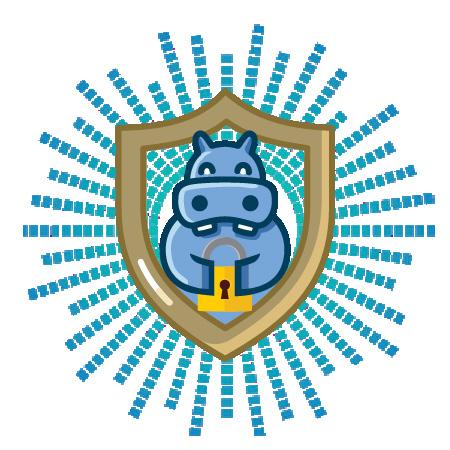
• The Cybersafe myGW group: A platform for community members to stay up-to-day on upcoming events and access exclusive content to enhance cyber awareness.
• Partnership with the GW Privacy Office: This collaboration offers a series of virtual workshops focused on privacy and information security principles and best practices.
Future Initiatives
• Expand Cybersecurity Awareness Training to all GW students
• Provide regular, online cybersecurity awareness training for faculty and staff
• Upgrade endpoint security to enhance protections for workstations and servers against
• Modernize Security Incident and Event Management (SIEM) tool
• Enhance email and vulnerability monitoring with modern tools to strengthen security across cloud, on-premise systems, and web servers.
• Apply a risk-based approach to further strengthen and evolve the cybersecurity program.
• Conduct a collaborative assessment to strengthen capabilities for protecting sensitive research data across university systems.

Risk Management & Security Assessments
GW IT continues to strengthen its cybersecurity posture through proactive risk assessments. In FY 25, 75 new engagements were launched and 120 assessments remained active— addressing risks across third-party vendors, applications, and hybrid environments.

In FY 2024, 149 Authorizations to Operate (ATOs) were issued—each representing a formal approval that confirms a university IT system or application has met required security standards before implementation.
Our incident response team actively investigates and remediates incidents identified through a combination of security alerts and user reporting.
Major incident response activities resulting from sophisticated compromises of GW user accounts and devices totaled 17 in FY 2025.


